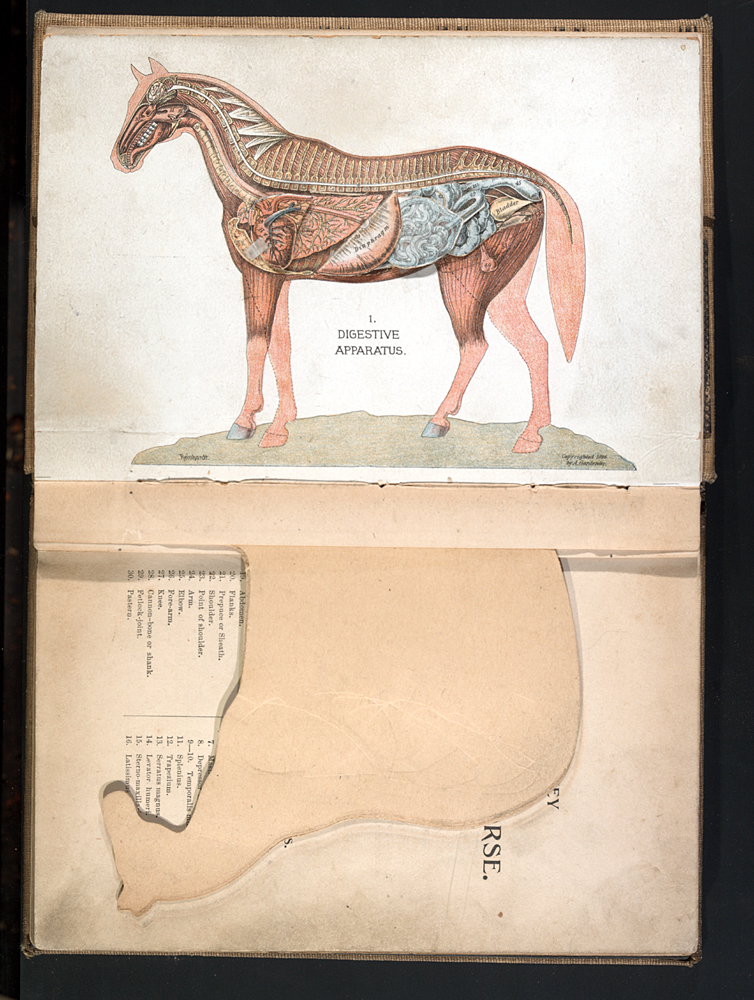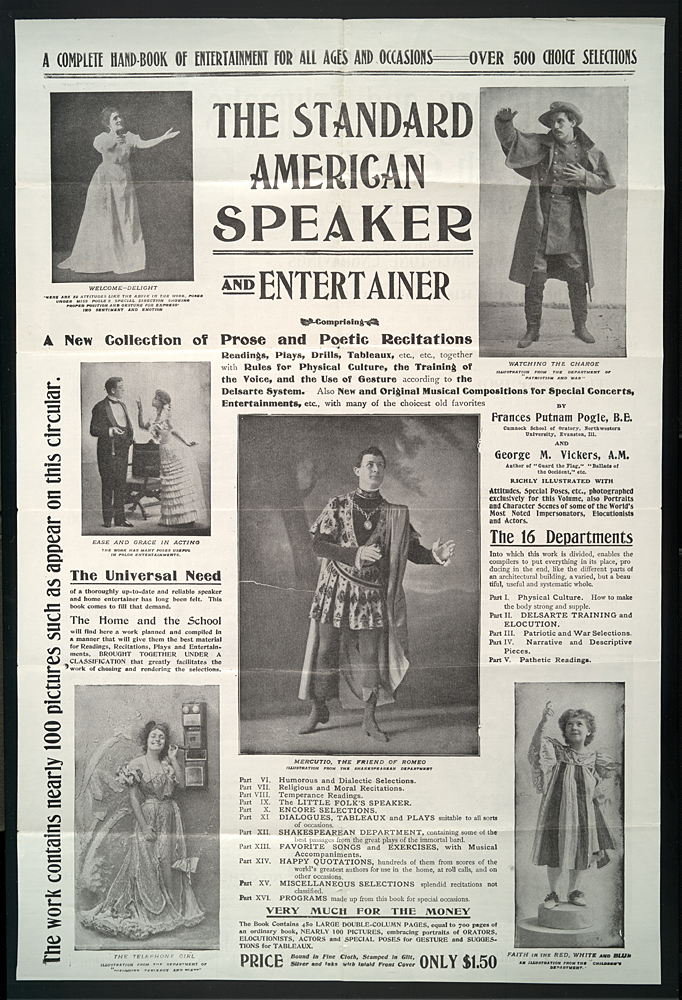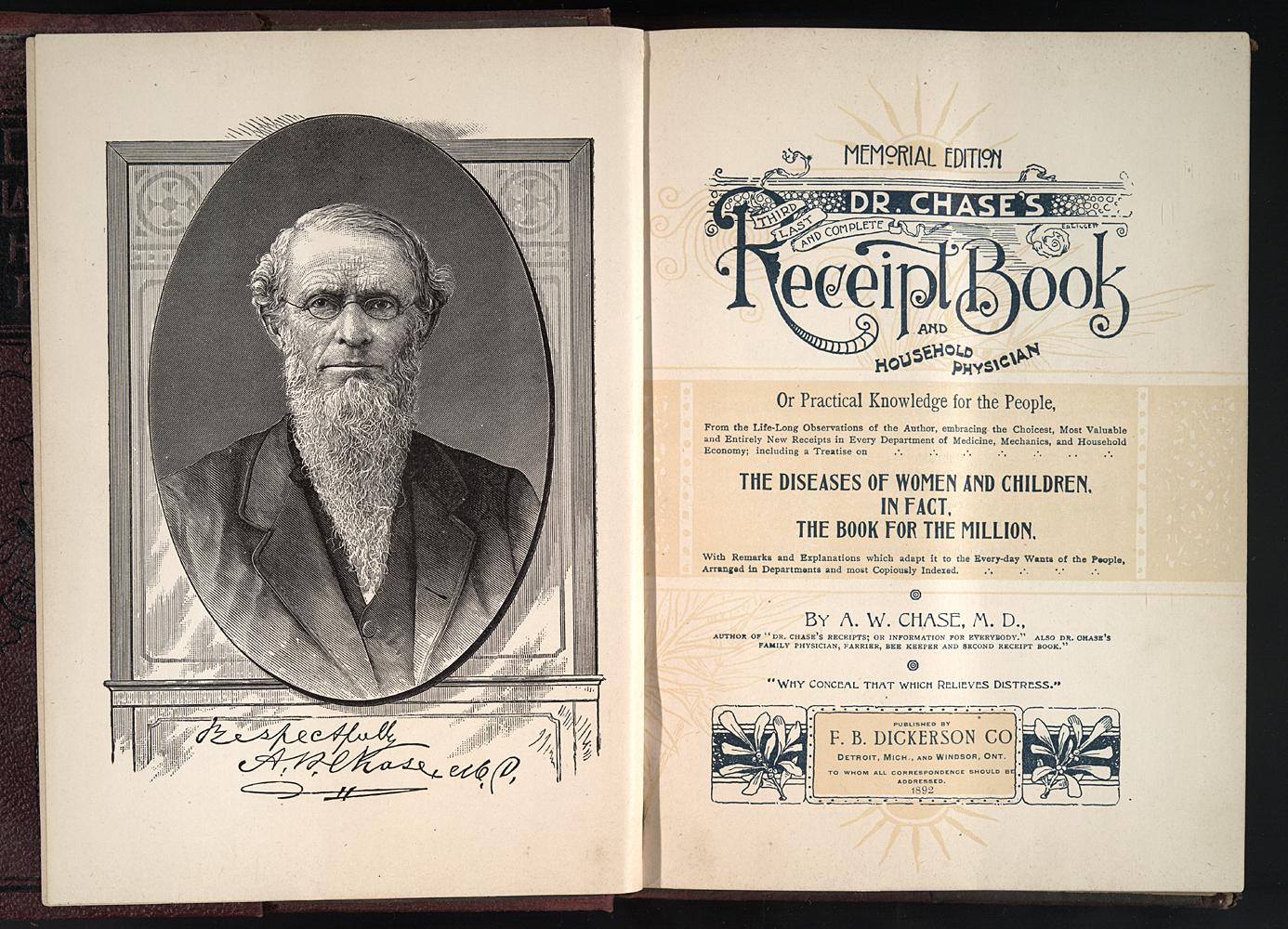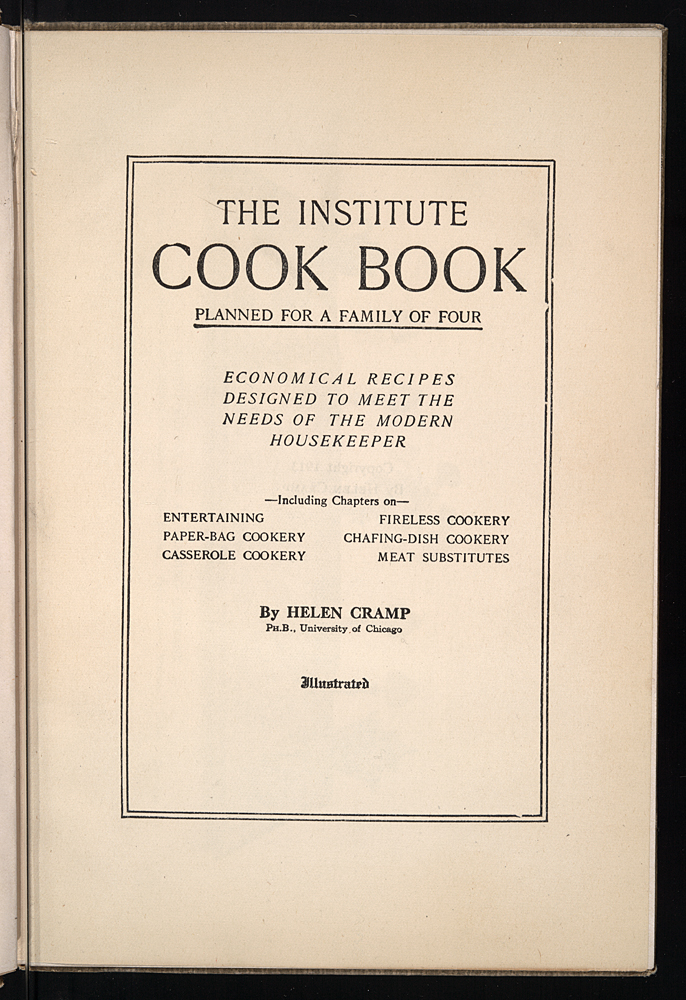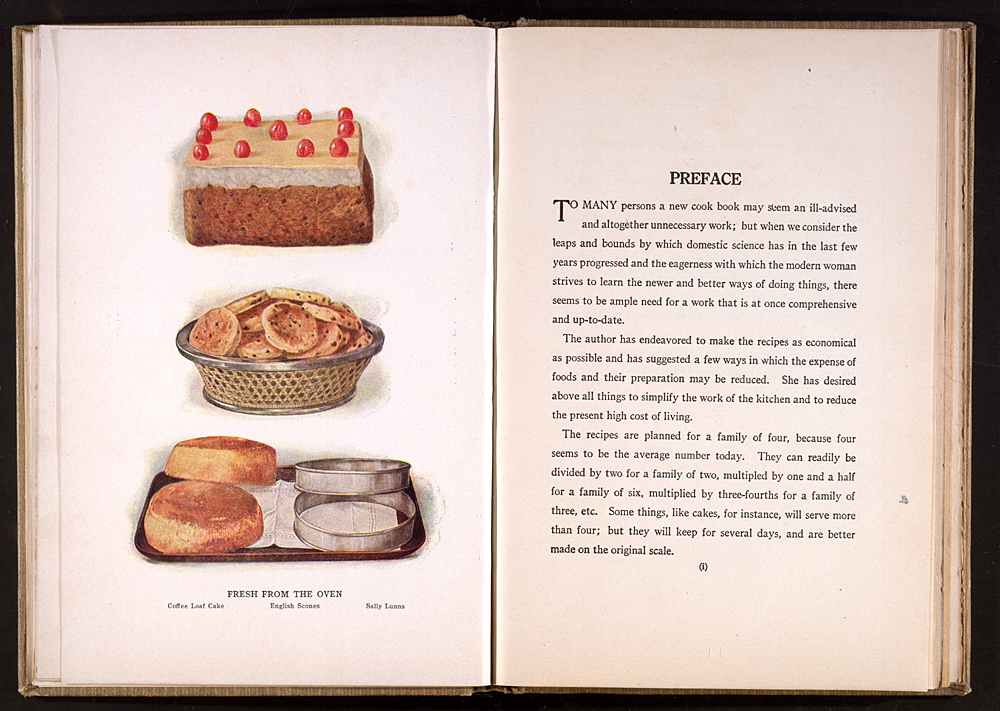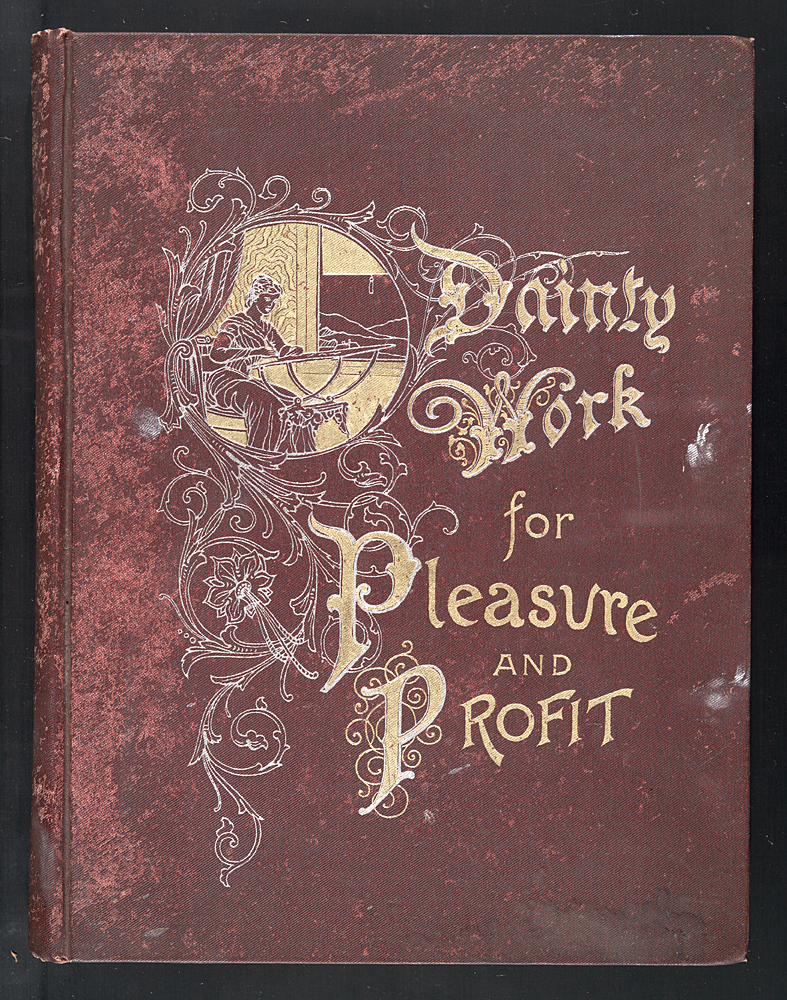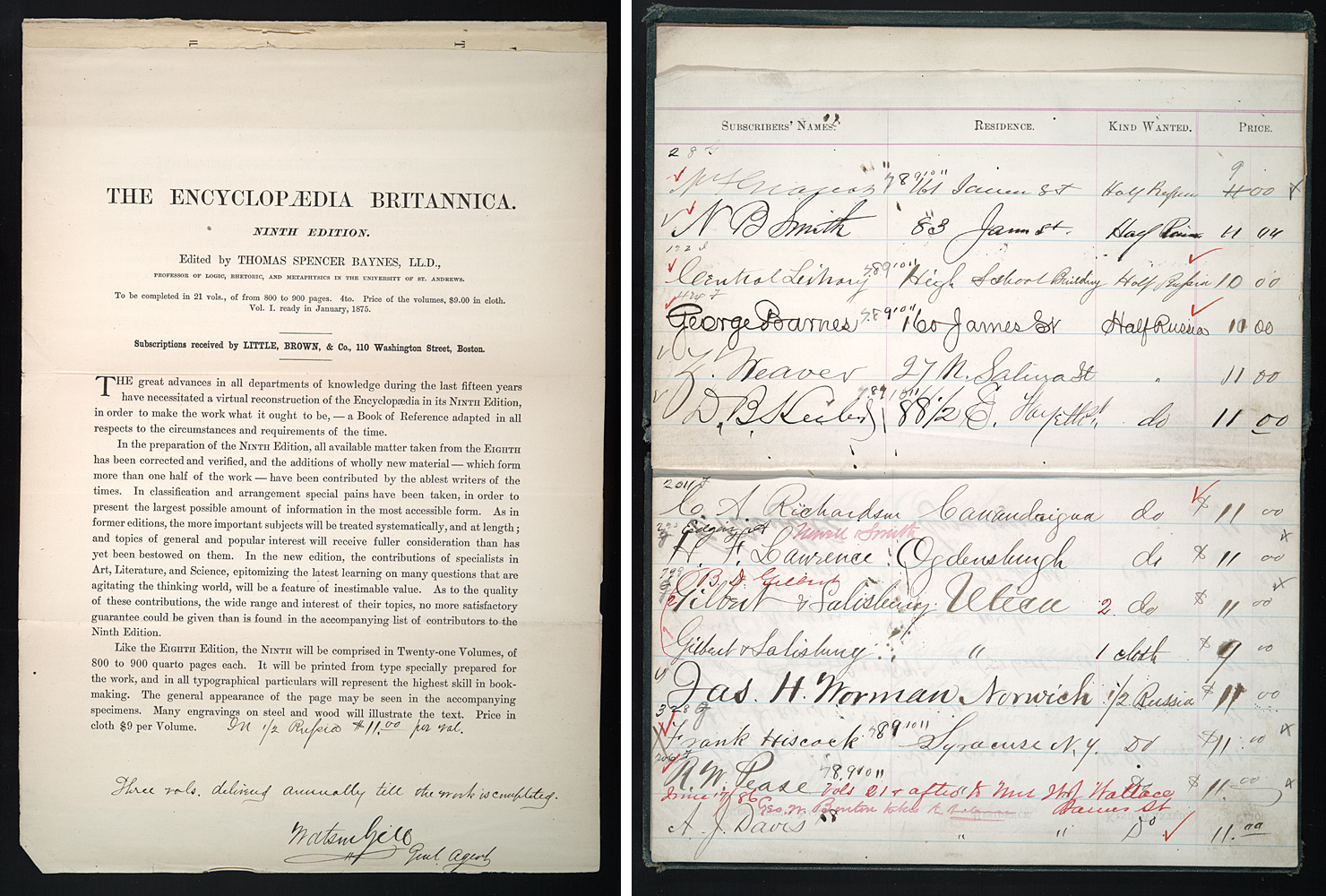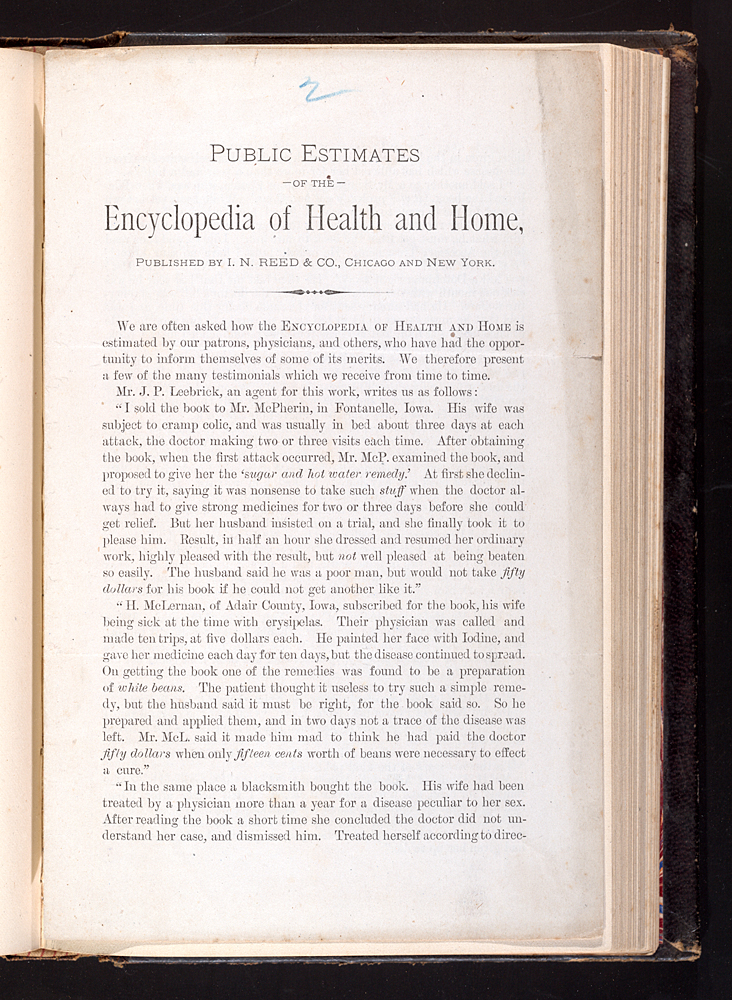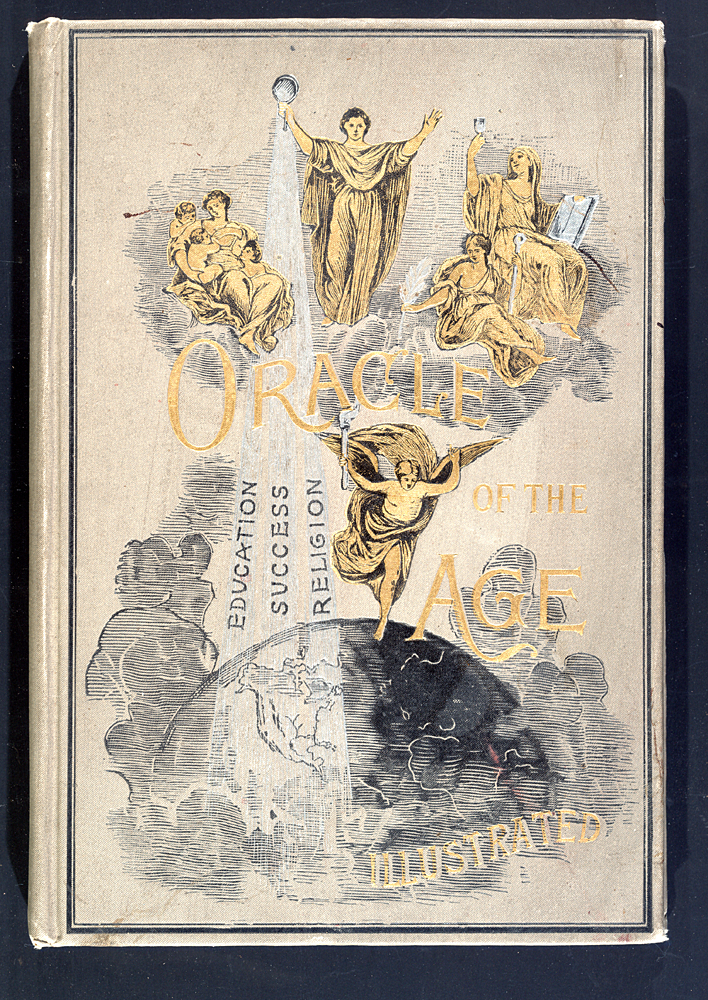Fig. 1: This handbook for farmers contains manikins, or cut-outs, showing the anatomical parts of the horse and the cow. Its publisher promotes it as "scientific, practical, simple, authentic and up-to-date." The predominantly rural nature of the United States at this time gave such books a large potential audience. This example contains handwritten testimonials from local leaders and the names, addresses, and binding choices of sixty subscribers, none of whom chose the most expensive binding.
Fig. 2: This circular advertises an elocution and recitation book, of which there are many in the Zinman Collection. They generally consist of compilations of readings and recitations containing something for everyone and every situation. Such anthologies brought together a variety of short pieces for literary recitations, a common form of community entertainment before radio and television. The Standard American Speaker also offers instruction in physical culture, gesture, and breathing. Purporting to address amateurs, the book can claim to be an invaluable addition to any home, school, Sunday school, etc. The many illustrations are intended to complement the text by offering visual clues on how to present oneself during recitations.
Fig. 3: Part cookbook, part moral advisor, part medical handbook, and heavily practical throughout, Dr. Chase's compendia claimed to contain just about everything a nineteenthcentury householder needed to know in order to survive. In fact, Dr. Chase's and the Bible were the two books most frequently carried across the country by the pioneers. Dr. Chase's was also sold in German translation, of which sample pages are included in this canvassing book, as savvy publishers were aware that many of these pioneers were recent immigrants whose only language was German.
Fig. 4 and Fig. 5: "A Book no Woman Can Afford to Be Without," its prospectus declares, Cramp's Institute Cook Book "Makes Meals Better--Makes Housework Easier--Makes Cost of Living Less." Although this canvasser's book seems in every way to be a typical example flogging a particular title, its actual purpose appears to be to sell membership in the International Institute, Department of Domestic Science. The cookbook, merely an added incentive to join the Institute, comes free to all members, who will also--supposedly--"have the further privilege of receiving advice on all questions of Household Management and Domestic Economy from the experts employed by the Institute." A well-documented fraudulent trade practice of certain disreputable subscription publishers was the offer of membership in nonexistent societies, clubs, and other organizations in connection with the sale of books. Whether or not the International Institute was legitimate is, at this date, hard to guess. But it certainly seems no more than a ploy to sell this cookbook, also published under various other titles, among them The Winston Cook Book,The Universal Cook Book, and the White Ribbon Cook Book, by the John C. Winston Company of Philadelphia and other subscription publishers across the country. The Institute's address, 1008 Arch Street, Philadelphia, is next door to Winston, at 1010 Arch Street.
Fig. 6: Heron's Dainty Work fed the burgeoning interest of women in domestic refinements that create a more pleasant home environment while claiming to encourage both tastefulness and economy. Heron also suggested ways in which women might use their talents to provide income for themselves and their families.
Fig. 7: Door-to-door encyclopedia salesmen are a residue of subscription publishing that continued well into the second half of the twentieth century. Many people can still recall their visits. Encyclopedias, a mainstay of subscription publishers, appeared in many varieties. Some were general. Others like the Encyclopedia of Health and Home: A Domestic Guide to Health, Wealth, and Happiness were dedicated to specific topics. Other encyclopedias targeted students, farmers, homeowners, and instructors in etiquette and manners. In fact, encyclopedias covered so vast a range of topics and appeared for so many years that they clearly were a successful format. Confronted by a need for many books on a topic, as opposed to only one that promised everything known about it, prospective customers usually opted for the one: "economy" was the key to their success.
Fig. 8: Some books dealt specifically with women's health issues . Many other household manuals also included medical receipts. But general medical books outnumber the rest, as the more than two dozen included in the Zinman Collection suggest. Reed's Encyclopedia, full of pithy advice and straightforward remedies, is, according to its publisher, "Thorough and Exhaustive, and Adapted to the Easy Apprehension of All Classes." Unlike other medical books on the market, which supposedly present remedies that only a physician can administer, this one claims to present information of use to the layman.
Fig. 9: Thayer, a clergyman and teacher, was the prolific author of many inspirational books for children and adults. A few were sold by subscription. Numerous later works promised to reveal the secrets of success: Men That Win; Women That Win; Ethics of Success; The Way to Succeed. Thayer obviously found an audience eager for guideposts on the road to achievement of their goals and exploited that topic again and again. Appropriately, the prospectus to this work proclaims that this is the ultimate book on the topic.
This, the latest and greatest work of a renowned author, is an Encyclopedia of character traits, exhaustive, thorough, and touching every phase of aspiring success. It is religious, historic, biographic, philosophic, and anecdotal, ... every chapter being a shining link in the brilliant chain of success.
Which exhibit?
Page: Featured item
Short name for this entry
Knowledge and Self-I
Order on exhibit page
1
Turn off the details link on the exhibit page
On
Exhibit sub-tab
